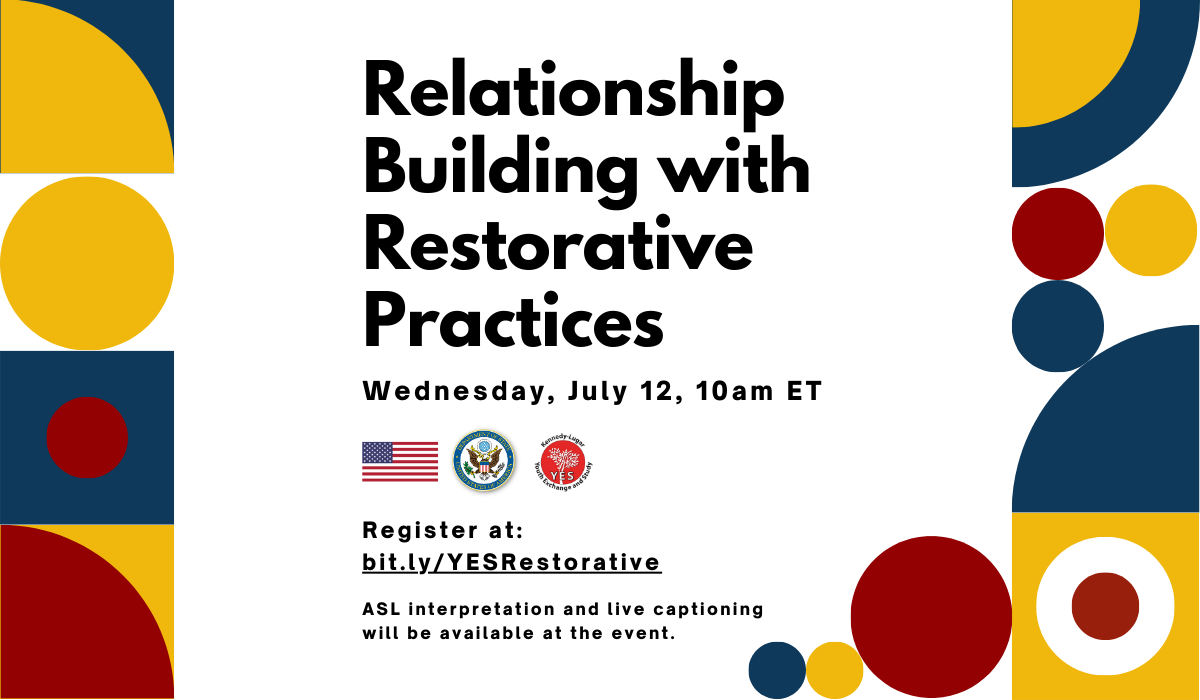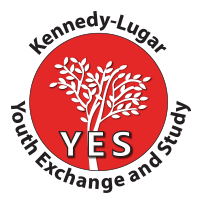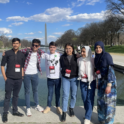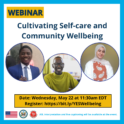Muskan, a student from Pakistan, discusses her experience attending Civic Education Week.
STORIES
Relationship Building with Restorative Practices Webinar

Restorative justice, which is rooted in practices of Indigenous societies, invites us to shift our perspective from sometimes dominant narratives of punishment, separation, and individualism, and to instead deepen our understanding of the interconnectedness within all levels of relationships, communities, and societies, and our greater environment. Through a restorative lens, we recognize the importance of building and strengthening relationships and our ties to one another.
On Wednesday, July 12, Jessica Laus, a YES Program Coordinator with iEARN-USA, offered an understanding of restorative justice and how restorative practices can be used to cultivate relationships in professional environments and communities. The skills shared during this webinar may be specifically leveraged for building relationships in YES alumni networks and associations, as well as developing partnerships to implement community projects and beyond.
This was an interactive event that was only be open to YES and YES Abroad alumni, and all attendees had to have access to their microphones and cameras to engage in discussion and breakout group activities. ASL interpretation and live captioning were available at the event.
The following is an offering on how you might facilitate a values and agreements discussion:
- After opening up the space with a welcome and opening/grounding ceremony, as well as a check-in and introduction, you may begin with the values discussion.
- You may wish to first share a list of values, like this one from Brené Brown, for inspiration, then invite participants to think about and record (on paper, on their phone) the following:
- What are your values?
- What about the people you look up to? What do you think your values are?
- What are the values that you want to bring into this space?
- Give participants time to reflect, and then go around the circle and invite participants to share, particularly the values they want to bring into the space you are co-creating. Make sure to record the values.
- Next, invite participants to consider how to put those values into practice by developing agreements. You may wish to clarify that agreements are not the same thing as rules or regulations, and that they are determined by the group, or at least agreed upon by the group. The agreements are based on the values that participants have identified, and once established, participants support each other in sticking to the agreements. These agreements inform how you hope to show up with each other in the space.
- Invite participants to think about and record (on paper, on their phone) the following:
- Based on the values that you identified, what are some agreements that would guide us into living into these values in this space together?
- Note: you may wish to model this to start, as this might be a new concept for participants to consider.
- Give participants time to reflect, and then go around the circle and invite them to share the agreement(s) they developed. Make sure to record the agreements.
- After all of the participants have shared, allow time for participants to read all of the agreements together. In a virtual space, this can be done in the chat and/or a presentation function, and in person, this should be done physically (on paper, on a dry erase board). Go around the circle again and ask if anything should be removed, added, adjusted, or if these agreements feel right to the group. Do this as many times as the group feels is necessary.
- Remember that these agreements are not static. You are encouraged to touch on them each time the group meets to ensure that they still feel right, and circle back to them if something should occur or they need to be revisited.
Resource List
- Dare to Lead List of Values from Brené Brown.
- The Power of Healthy Relationships at Work by Emma Seppälä and Nicole K. McNichols, Harvard Business Review.
- Little Book of Race and Restorative Justice: Black Lives, Healing, and US Social Transformation by Fania Davis, co-founder of Restorative Justice for Oakland Youth.
- Additional resources from Restorative Justice Initiative.





